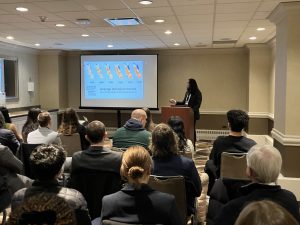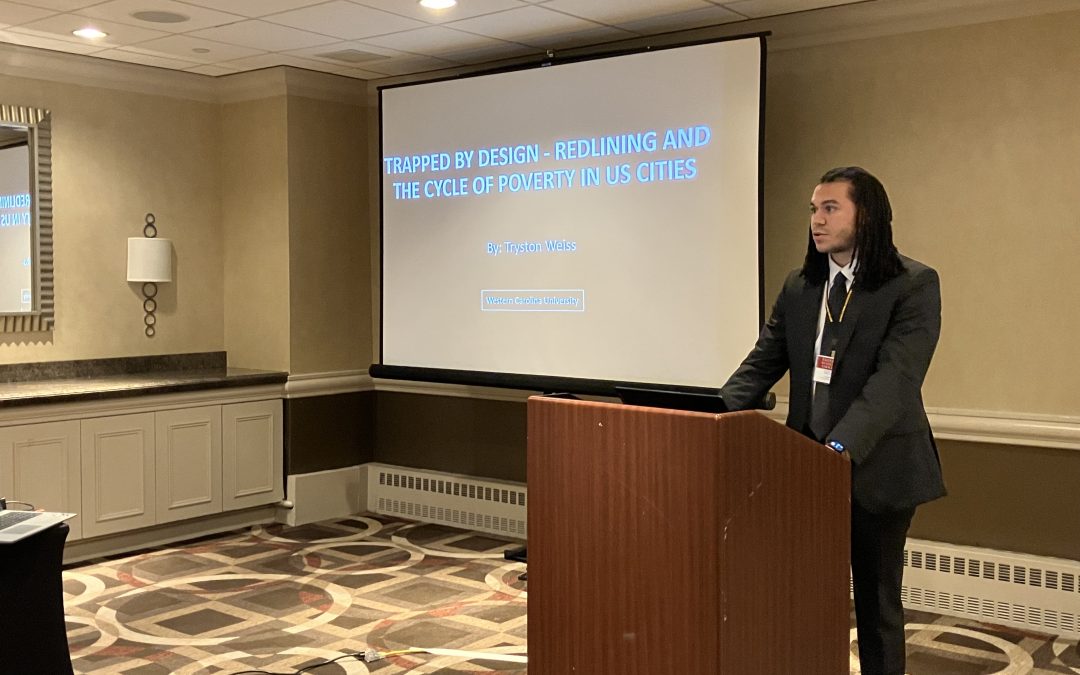On Saturday, February 22, 2025, Tryston Weiss presented his paper, “Trapped by Design: Redlining and the Cycle of Poverty in the US Cities” at the Issues in Political Economy Undergraduate research sessions at the Eastern Economic Association Meetings in New York City. Tryston’s paper investigates how mortgage investment risk grading implemented by the Home Owners’ Loan Corporation (HOLC) in the 1950s is associated with lower income in 2010, and lower income growth between 1950 and 2010.
In the 1950s a series of mortgage investment risk maps were issued by the Home Owners’ Loan Corporation (HOLC) to provide potential lenders with a measure of risk at the census tract level. Those deemed riskier witnessed less opportunity for additional housing investment and therefore had less access to mortgage loan markets. Using Lee and Lin’s (2018) GIS based crosswalk to match 1950 Census tracts to 2010 Census tracts, Tryston finds that those deemed riskier in 1950 have lower average household income percentile ranks in 2010. 
However, the HOLC risk measure are an aggregation of many characteristics of the Census tract. To focus on the portion of the HOLC measure that may be due to racial discrimination, Tryston uses a two-stage estimation technique where he regresses the HOLC measure on economic characteristics that are often used when assessing credit worthiness for a mortgage, such as household income, average house value, and the average age of the home along with a measure of the share of those who are African American. This enables him to estimate the portion of the HOLC measure that is associated with racial discrimination. He then uses this racial discriminatory portion of the HOLC measure and finds that a standard deviation increase in the African American discriminatory component of the mortgage risk measure is associated with a 6.4 percentage point decline in the household income percentile rank of a census track from 1950 to 2010.
Tryston’s presentation was clear, well organized, and well received. He gained valuable feedback from his discussant and many audience members. Excited to see how Tryston incorporates these suggestions during the second half of his independent research class this spring.

